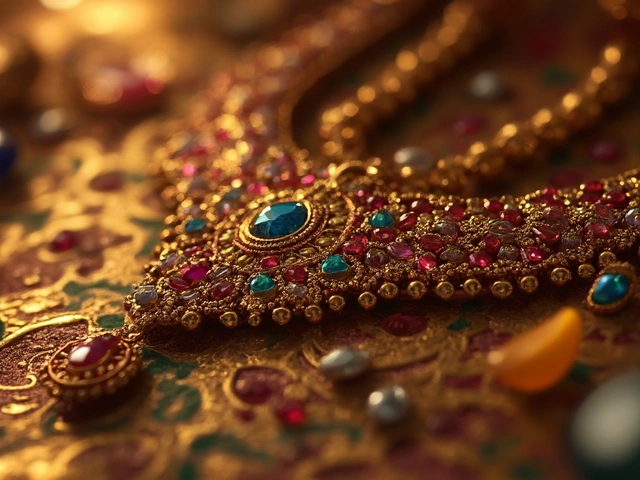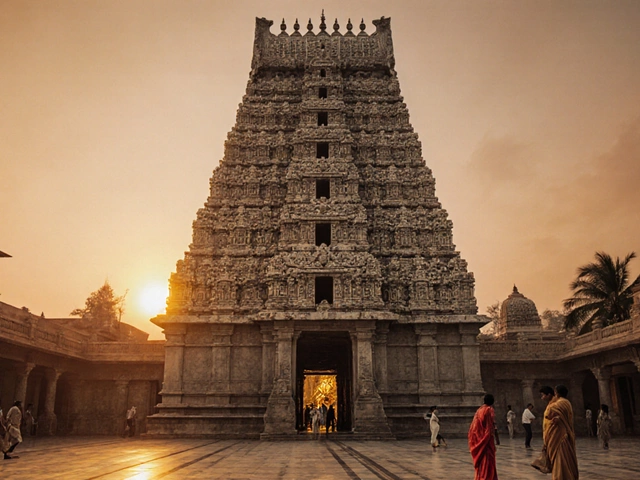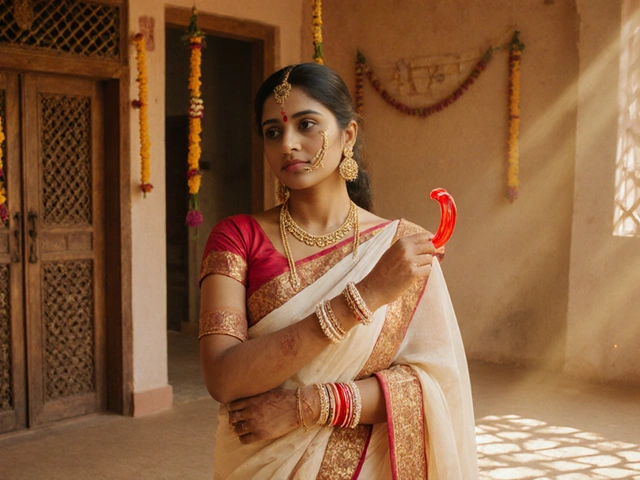
Mangalsutra Design Comparison Tool
Select your priorities to find the ideal mangalsutra design for your needs
Your Priorities
How This Works
The tool calculates a score for each design based on your priorities. Higher scores indicate better matches for your needs.
Recommended Designs
Magnetic Clasp
• Ease of removal: 95/100
• Cultural acceptance: 70/100
• Health safety: 85/100
• Budget: 65/100
Price range: ₹4,000 – ₹10,000
Lock-Drop Design
• Ease of removal: 85/100
• Cultural acceptance: 85/100
• Health safety: 80/100
• Budget: 75/100
Price range: ₹3,000 – ₹8,000
Adjustable Length
• Ease of removal: 70/100
• Cultural acceptance: 90/100
• Health safety: 95/100
• Budget: 55/100
Price range: ₹5,000 – ₹12,000
Traditional Fixed Chain
• Ease of removal: 20/100
• Cultural acceptance: 95/100
• Health safety: 75/100
• Budget: 80/100
Price range: ₹1,500 – ₹5,000
Ever wondered if a woman can take off her mangalsutra removal without breaking traditions? It’s a question that pops up at family gatherings, medical appointments, and even on social media. Below we break down the cultural roots, legal angles, health factors, and practical ways to slip that necklace off when you need to.
What Exactly Is a Mangalsutra?
Mangalsutra is a traditional Hindu necklace that symbolizes a married woman’s marital status. Often made of black beads, gold, or silver and sometimes featuring a pendant, the mangalsutra is tied during the wedding ceremony as part of the saat phere ritual.
The Cultural Weight Behind the Chain
In many Indian households the mangalsutra is more than jewelry - it’s a visual cue that a woman is married. Historically, it acted as a protective talisman, and today it carries expectations about fidelity, respect, and family identity. While some families treat it as a must‑wear item, others see it as optional fashion.
Legal Perspective: Does the Law Force You to Keep It On?
Personal Law in India does not stipulate that a married woman must wear a mangalsutra at all times. The Constitution guarantees freedom of religion and personal choice, meaning no criminal penalty exists for taking it off.
However, divorce or separation settlements sometimes reference the mangalsutra as a personal asset. Courts usually treat it as ordinary jewelry unless the couple explicitly agreed otherwise.
Health Reasons You Might Want to Remove It
Skin irritation is a common complaint. Allergic reactions to gold, nickel, or even the black beads can cause rashes, especially in humid climates.
Doctors often advise patients to remove any tight necklaces during surgery, MRI scans, or when treating neck injuries. In such cases, taking off the mangalsutra is not just acceptable-it’s medically advisable.
Social Implications: What Friends and Family Might Say
Even though there’s no legal binding, social pressure can be strong. Some relatives might view removal as a sign of disrespect or a break from tradition. Others, especially younger generations, may applaud the choice as a statement of personal autonomy.
Talking openly with your partner and family can smooth over misunderstandings. Explain the practical reasons-health, comfort, or professional uniform requirements-and many will understand.
How to Remove a Mangalsutra Properly
- Find a soft, clean surface like a towel to lay the chain on.
- If the clasp is a traditional lock, gently press the hidden button or slide the latch; most locks open with a soft push rather than a pull.
- If the necklace is a single strand tied with a knot, use a dab of oil (coconut or olive) to loosen the knot, then gently slide it off.
- Store the mangalsutra in a breathable jewelry box to prevent tarnish.
For permanent or semi‑permanent designs, consider visiting a trusted jeweler who can safely undo the lock without damaging the piece.
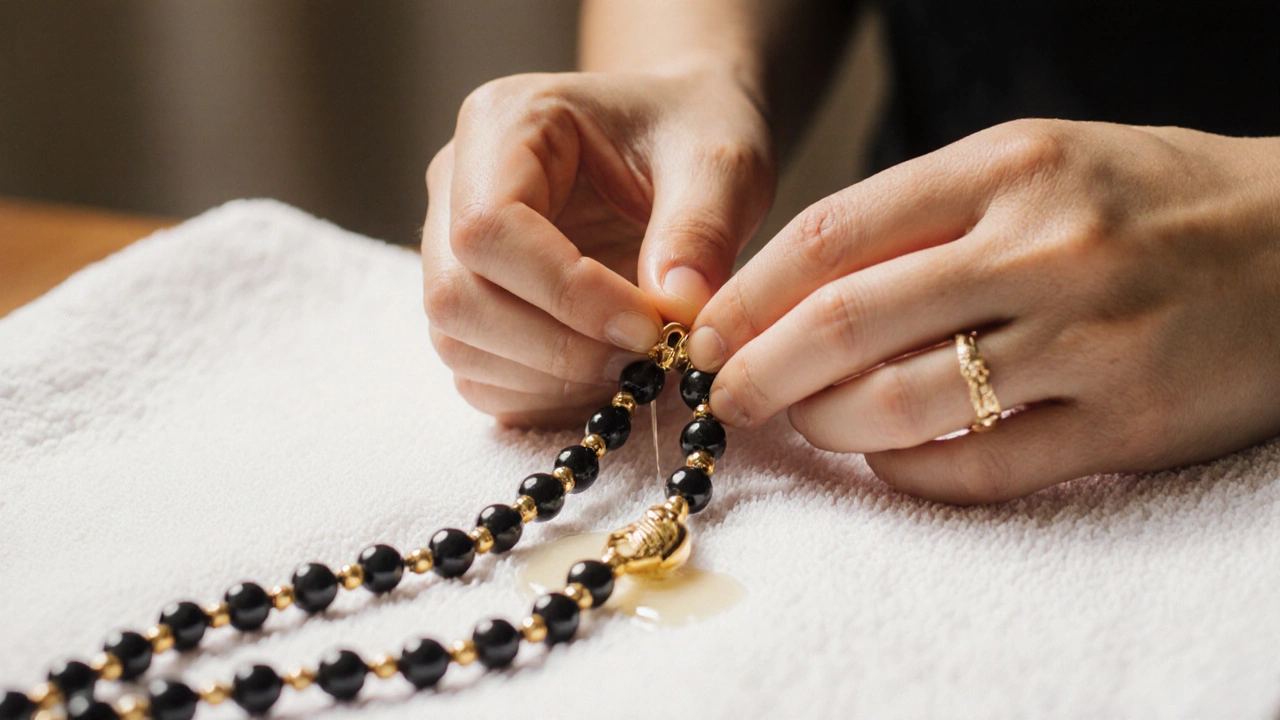
Designs Made for Easy Removal
Modern designers have responded to the demand for flexibility. Here are three popular types:
- Lock‑drop designs: A tiny, concealed lock that clicks open with a fingertip press.
- Magnetic clasps: Strong magnets hide behind decorative beads, allowing quick snap‑on/off.
- Adjustable chain lengths: Extendable links let you lengthen or shorten the chain, making removal a breeze.
Traditional vs Removable Mangalsutra Designs
| Design Type | How It’s Worn | Removal Mechanism | Cultural Acceptance | Typical Price (INR) |
|---|---|---|---|---|
| Traditional Fixed Chain | Tied at the base of the neck, often with a single knot | Requires untying the knot or cutting the chain | Highly accepted in conservative families | 1,500 - 5,000 |
| Lock‑Drop | Clasp sits behind a decorative pendant | Press hidden release button | Growing acceptance, especially among urban couples | 3,000 - 8,000 |
| Magnetic Clasp | Beads conceal magnetic ends | Snap off with two fingers | Modern‑friendly, some traditionalists skeptical | 4,000 - 10,000 |
| Adjustable Length | Extendable links allow loose wearing | Slide chain to desired length, no lock | Popular in contemporary designs | 5,000 - 12,000 |
Practical Tips for Everyday Wear
- Choose hypoallergenic metals like 22‑carat gold or sterling silver if you have sensitive skin.
- Rotate between a mangalsutra and a simple pendant to give your neck a break.
- Keep a small spare clasp in your handbag for emergencies.
- If you travel abroad, carry a travel‑size jewelry cleaning cloth to prevent tarnish.
When Removal Becomes a Bigger Conversation
Sometimes taking off the mangalsutra signals deeper issues-relationship strain, identity shifts, or a desire for independence. In those moments, the necklace becomes a symbol rather than a piece of metal. Counseling, open dialogue, and respectful listening often help navigate the emotional terrain.
Bottom Line: You Have the Choice
There’s no legal rule that forces a woman to keep her mangalsutra on at all times. Cultural expectations vary, and modern designs make it easy to honor tradition while staying comfortable. Whether you’re removing it for health, work, or personal preference, the decision ultimately rests with you.
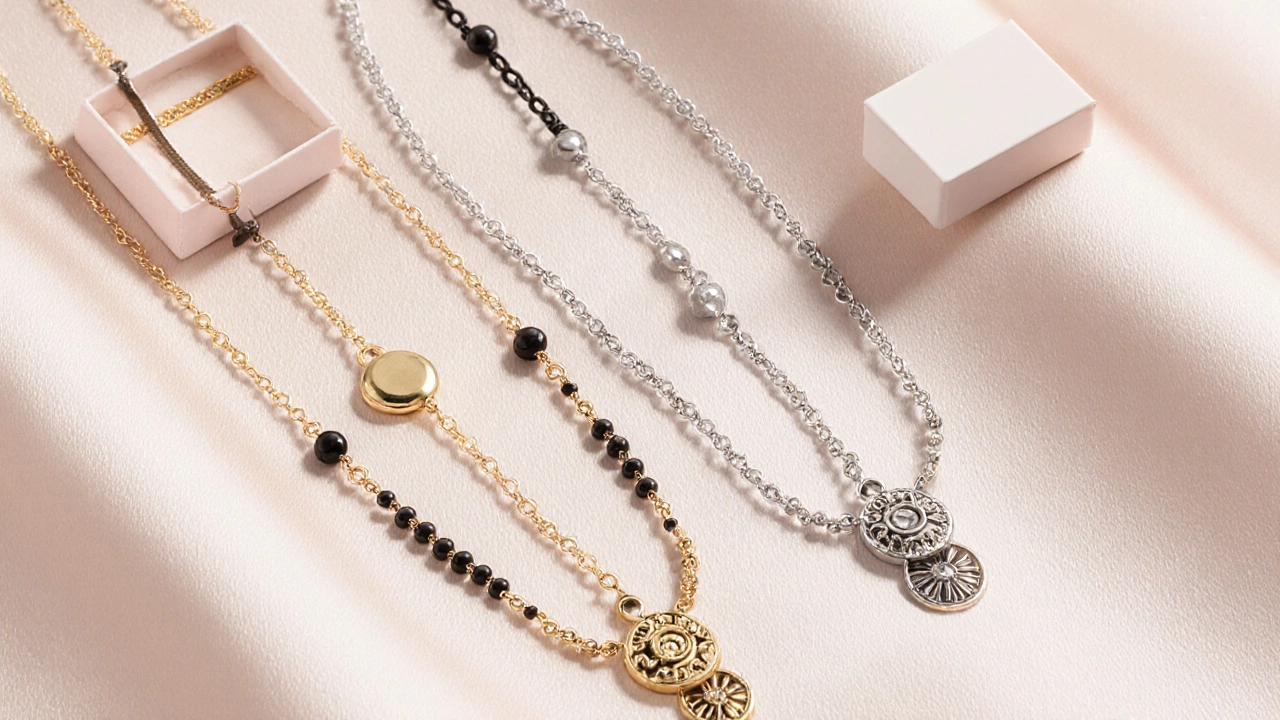
Can a married woman legally remove her mangalsutra?
No law in India mandates continuous wear. Personal freedom, protected by the Constitution, allows removal for health, comfort, or personal choice.
Is it disrespectful to take off the mangalsutra in front of family?
Respect perceptions differ. While traditional families may view it as disrespect, explaining the reason-like skin allergy-usually eases tension.
What are the safest ways to remove a fixed‑knot mangalsutra?
Apply a few drops of lubricating oil to the knot, gently pull the ends apart, and avoid forceful yanking that could damage the chain.
Which mangalsutra designs are best for frequent removal?
Lock‑drop, magnetic, and adjustable‑length designs are purpose‑built for easy on/off without harming the piece.
Can a mangalsutra be considered marital property in divorce?
Typically, courts treat it as personal jewelry unless the couple listed it as a marital asset in a settlement agreement.
How do I clean a mangalsutra after removal?
Use a soft cloth with mild soap water, rinse gently, and dry thoroughly. For gold, a jeweler’s polishing cloth works well.


